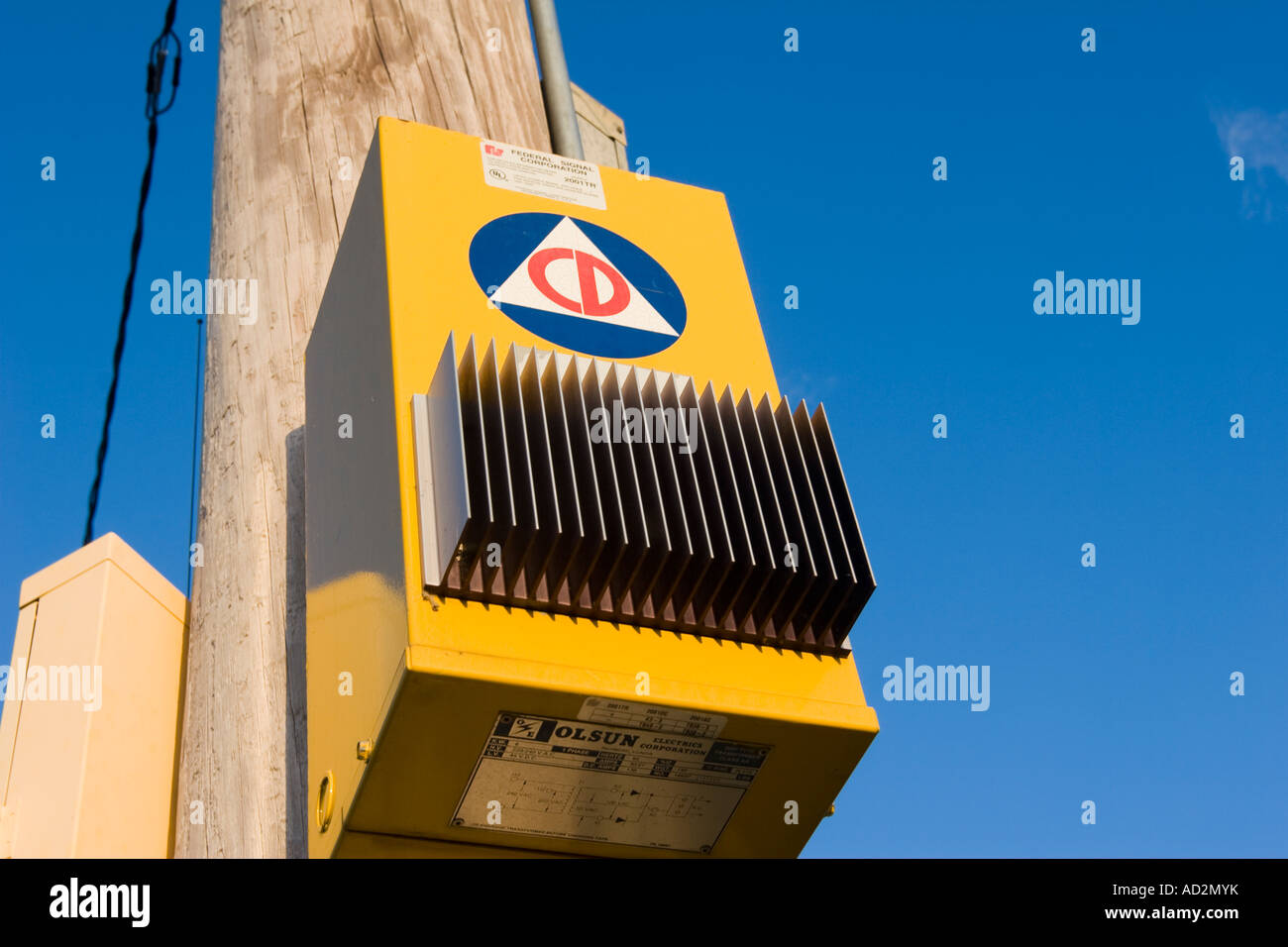An american Civil Defence siren control box in Kearney, Nebraska, USA.

Image details
Contributor:
Ryan McGinnis / Alamy Stock PhotoImage ID:
AD2MYKFile size:
50 MB (1.2 MB Compressed download)Releases:
Model - no | Property - noDo I need a release?Dimensions:
5120 x 3413 px | 43.3 x 28.9 cm | 17.1 x 11.4 inches | 300dpiDate taken:
13 September 2005Location:
Kearney, Nebraska, United StatesMore information:
A civil defense siren (also referred to as an air raid siren, tornado siren, or outdoor warning siren) is a mechanical device (modern day sirens are electrically-powered) for generating sound to provide warning of approaching danger and sometimes to indicate when the danger has passed. Initially designed to warn of air raids in World War 2, they were adapted to warn of nuclear attack and of natural phenomena such as tornadoes. The generalized nature of the siren led to many of them being replaced with more specialized warnings, such as the Emergency Alert System. Sound is generated by a motor driving a shaft with fans on each end, one fan having a few more blades than the other. Around each fan is a housing with a number of cut slots to match the number of fan blades. The blades draw air in at the end and force it out through the slots in the housing in rapid pulses, which produces the sound. Modern sirens can reach up to, but not commonly, 135 decibels when measured 100 feet away from the siren; the loudest confirmed siren ever produced was the Chrysler Air Raid Siren, producing 138 dB at 100 feet. The Chrysler Air Raid Siren used a 180hp V-8 hemi engine to drive the siren and weighed 5543lbs.